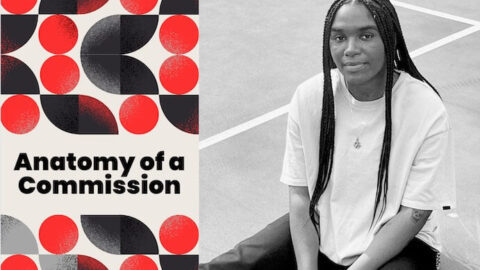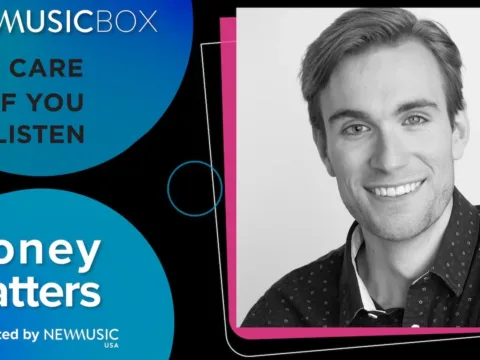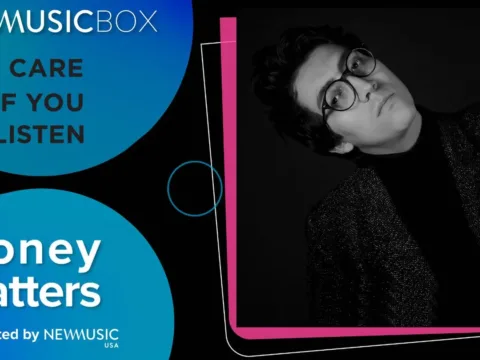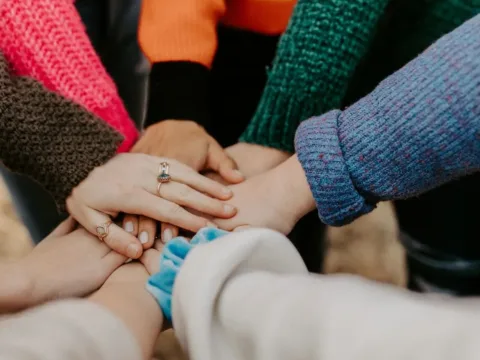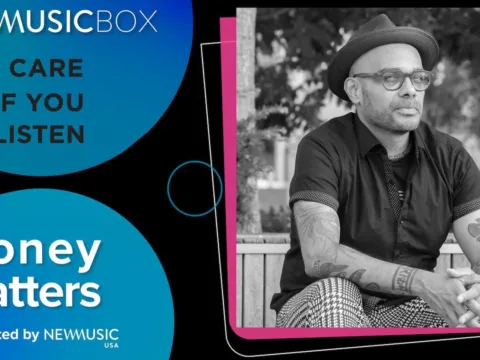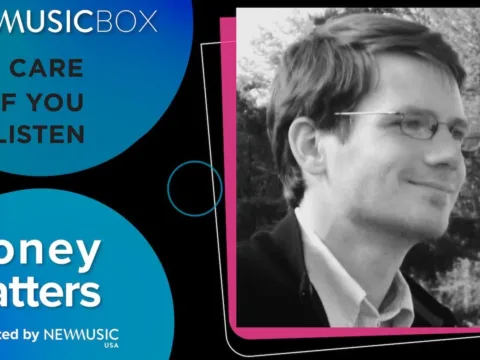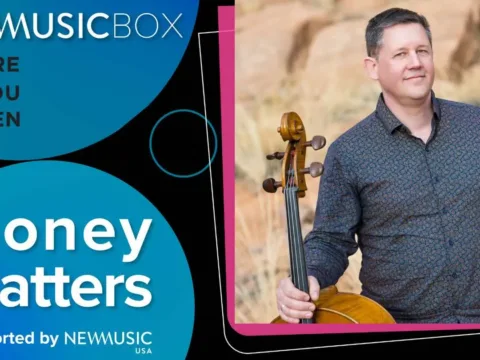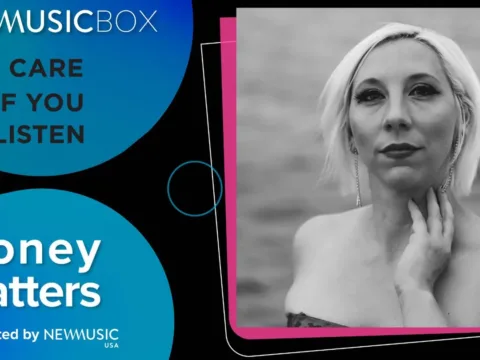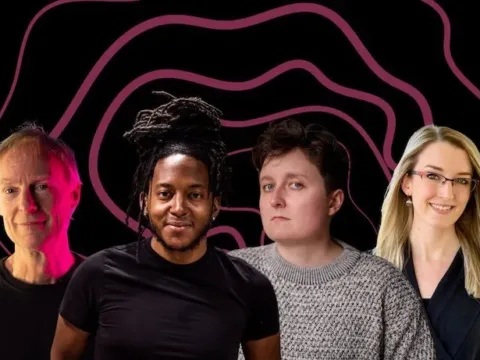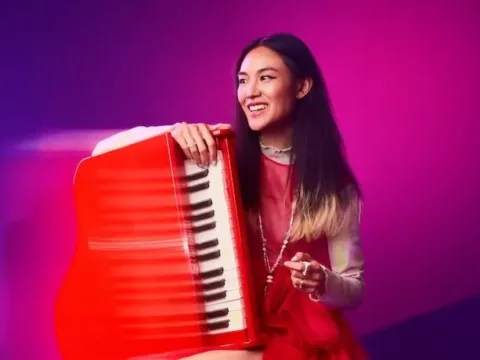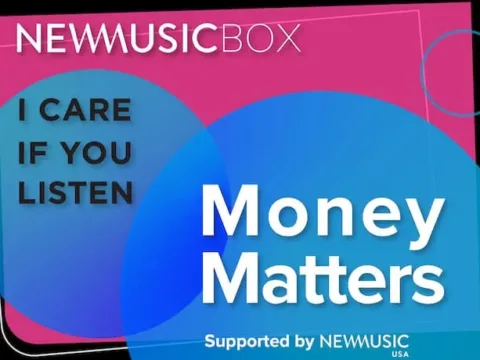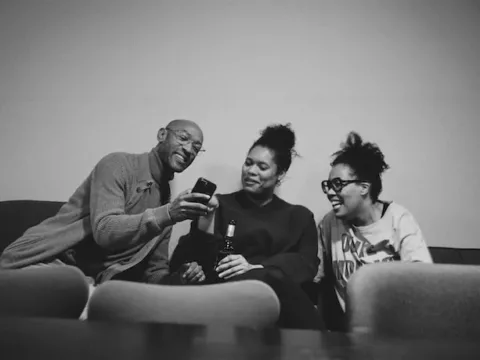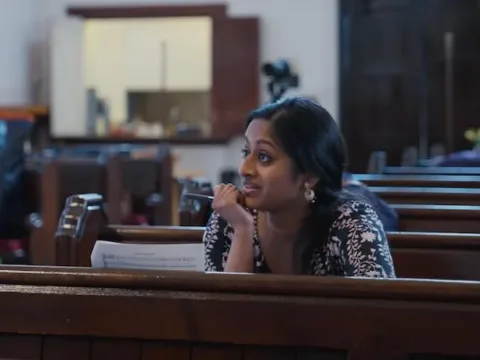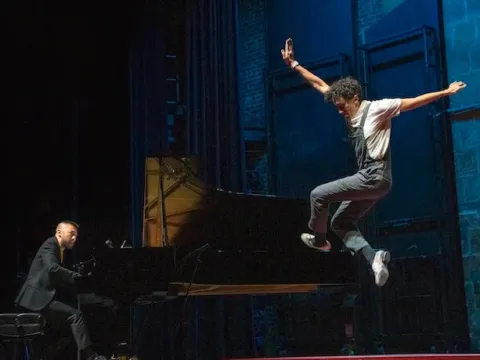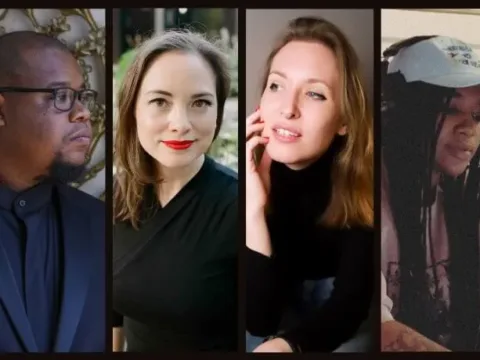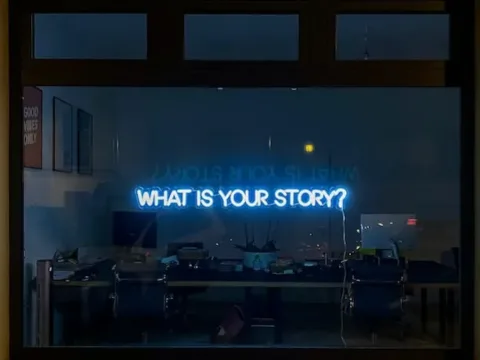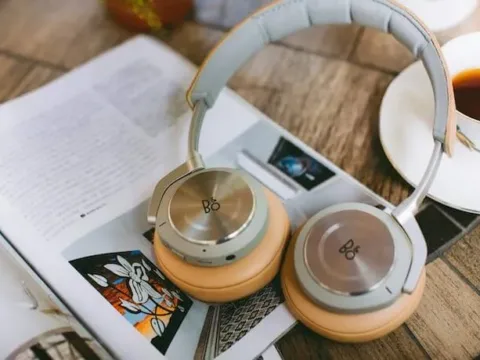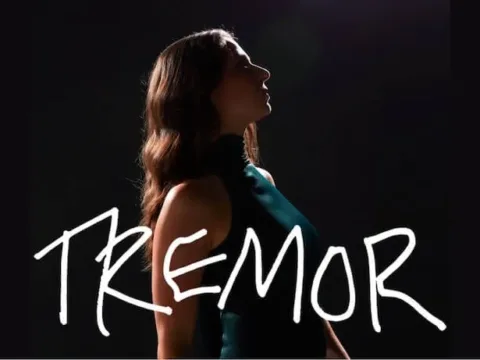Designed for both music creators and their collaborators, “Anatomy of a Commission” is a digital resource that aims to increase transparency about the commissioning process. For more information about the initiative, visit American Composers Forum’s website.
Over the past few years, I’ve had many conversations with both performers and composers about the inaccessibility of “New Music.” We shell out thousands of dollars to attend programs and workshops, apply to opportunities, travel to these opportunities, and maintain our instruments and studio spaces. It can be extremely difficult for many performers, even those who are part of an ensemble, to additionally fund the commissioning of new work. And for composers, it’s common for the commissioning process to be cut short, with the “end goal” being a single live performance. While we all need money and material resources to support ourselves, there are ways to commission and collaborate that don’t follow the current model of capitalistic transaction, and instead result in a practice that is more accessible for everyone involved while also building longer-lasting collaborative relationships.
Commissioning as a Collaborative Process
Approaching a commission as an equal collaboration between composers and performers is much more fulfilling than just signing a contract, then receiving the final score months later. This allows everyone to be more present and engaged throughout the entire commissioning process – from conceiving ideas and early sketches, to the presentation of the new work – and is more likely to lead to future partnerships down the road.
We can begin by reimagining the idea of composers as solitary beings. While it’s true that many composers need time and space to physically create a musical score, commissioning can and should be a collaboration between composers and the performers. Early questions and conversation points can include:
Are there any histories, themes, or conceptual ideas that are important to both the composer and commissioner? Be wary of proposing identity-related projects to composers of that identity, i.e. Don’t assume a queer composer only wants to write about their queerness and have their work presented in a Pride Month program.
[Tweet “While it’s true that many composers need time and space to physically create a musical score, commissioning can and should be a collaboration between composers and the performers.”]
In what context will audiences hear the commission? What other pieces or composers will be on the program/album? Could the commissioned artist be a co-curator? Thinking about the context in which the commission will be heard can generate holistic listening experiences for audiences, rather than automatically inserting the premiere as the first or second piece on a program that was planned before even approaching the commissioned artist. Working together to curate a program can allow the composer to situate themselves within a specific artistic context that speaks directly to the new work.
How much workshop and rehearsal time will be allotted for the new work? When commissioning a new work, allocating an appropriate amount of time for preparation benefits both parties. Workshops and rehearsals are an invaluable space where composers have the unique opportunity to make changes in real time, and work together with performers on any issues or compromises to ensure that the premiere is the best it can be.
Now is also the time for the commissioner to be clear and upfront about technicalities: What is capable and/or idiomatic for the involved instrumentation? What technology is possible? And for composers: now is your chance to ask the performers what they like, and decide how much of it you can incorporate into the piece.
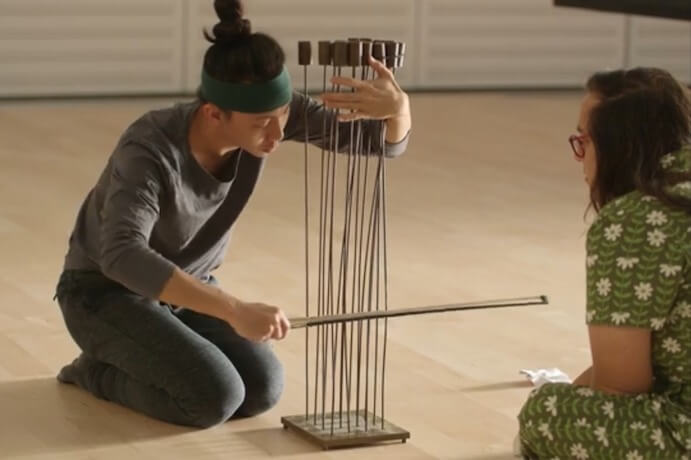
Commissioning as a Communal Practice
If the commission is a first time collaboration, the hope is that the commissioner wants to be in community with the commissioned artist. Unfortunately, this sometimes turns into a one-off exchange, but there are steps that commissioners can take to make commissioning an invitation to a long-term, ongoing relationship.
Before the piece is written, think about a consortium! Are there other performers or ensembles who might be interested in commissioning a new work from the artist you had in mind? Consortiums can be a way to generate more funds for a commissioning fee, as well as more workshopping/recording opportunities, and performances for the new work once its complete. For any commission, it’s helpful for the commissioners to perform the new work as much as possible in different settings. This can mean repeated or touring concert programs, an open rehearsal/workshop performance, or free community events.
Making plans to record the newly commissioned work is also a tangible benefit for everyone. It doesn’t have to be a professional studio recording, but setting aside time for a nicer recording than the live premiere can be invaluable to the composer. An easy way to do this is to work it into the final/dress rehearsal of the piece. Providing composers with a good recording of the work for their websites/portfolios will allow those in community with both the composer and the performers to experience the work once it’s shared.
Commissioners can also invite the composer to participate in other events surrounding the commission (for additional fees, if possible). For example, when A Far Cry commissioned me in 2021, not only did I create a new work with the ensemble, but I also participated in a panel leading up to the premiere with the other artists on the program; as well as a discussion with young artists who were part of the Castle of our Skins fellowship program at New England Conservatory in Boston, where the premiere was taking place. These two experiences made the commission more fulfilling, as I got to engage with community members who would be attending the performance.
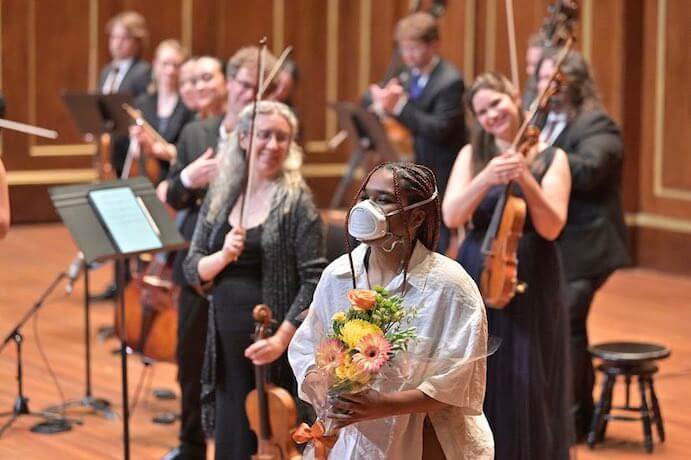
After the piece is written (and performed), continue to keep the commissioned artist in your circle! Perform other works by them, recommend them for external opportunities, and invite them back for other projects. Some of the best artistic partnerships I’ve cultivated have come out of these sustained relationships. In 2019, I was a runner-up of National Sawdust’s Hildegard Commission, and had a piece premiered at the culminating concert. Since then, I have been invited back by Sawdust for numerous opportunities at different steps of my career. This has proved significant both materially and communally, as these presentations have led to further collaborations and relationships; while also allowing me to feel creatively supported as my practice evolves and expands over time.
Facilitating Accessibility through Commissioning
Lastly, I want to speak on ways to make the commissioning process more accessible – not only financially, but in terms of health and disability. As an artist navigating dynamic disability, there are many ways “New Music” has been disappointing in its inclusion efforts for those dealing with illness and financial insecurity. Since the lifting of mask mandates and mentions of a “post-Covid” society, many have treated accessibility measures as an afterthought, rather than an essential part of creating and presenting art. The live streams, masks, free applications, and affordable programs are now scarce – as though they are no longer trendy or sustainable enough now that things are “back to normal,” instead of implementations that we should continue to hold onto.
However, we can look to practices owed to DIY and non-institutional spaces/artists who have paved the way for accessibility in the arts. For larger projects, commissioners should ideally cover as many additional fees as possible, like engraving, technology needs, and travel/accommodations for the premiere. For commissioning competitions (programs, grants, awards, etc.), organizations can increase accessibility by waiving entrance fees completely or offering pay what you can (PWYC) options; and not requiring letters of recommendation or other forms of measuring academic standing/networking, which is exclusionary to many types of artists.
Composers can also be flexible with commissioning fees and offer PWYC or sliding-scale rates when appropriate. Large organizations with big budgets should be expected to meet your requested commissioning fee. But for students, or a public school wind ensemble, you can consider offering lower rates or payment plans; or even trades with colleagues (maybe you write a piece for someone who lets you use their studio for a couple of months). These practices are common in other art practices like tattooing, but incorporating them into my own practice has proven fruitful over the years.
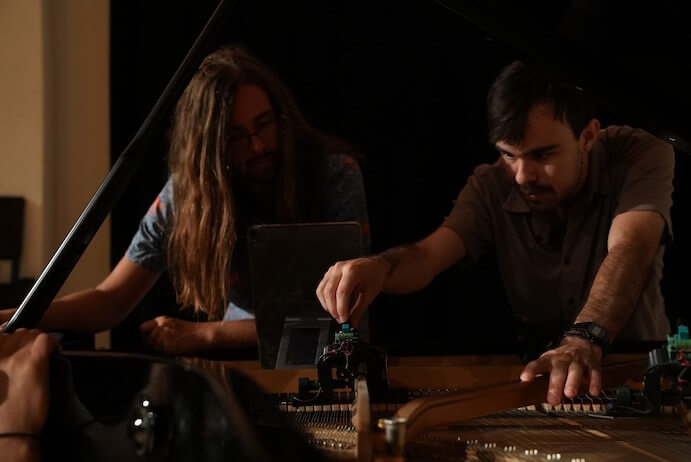
All artistic parties should also think about how to make the performance of the commissioned work as accessible to as many audience members as possible. This can take the form of live streaming, giving complimentary tickets to the commissioned artist, offering discounted or PWYC tickets for the entire program, free parking, hiring ASL and other language interpreters (and having translations/audio-assistance/braille for programs), performing in wheelchair-accessible venues, and acknowledging that the ongoing pandemic is continuing to exclude immunocompromised and disabled people. In June, I performed a work by a disabled composer with another disabled artist at a well-known venue in Brooklyn, and I was delighted to hear that they required audience members to wear masks. This is a huge gesture that made me feel safe and respected as a performer. While many people have stopped masking, there are many more who continue to be excluded from events because communal public safety measures like masking have been discarded in favor of individual comfort. If you want to truly be inclusive and accessible, masks are still a must at your events.
In order to commit to sustainable, accessible artistic practices, we must continue to dream new ways of doing things. I hope all of us are willing to facilitate the changes we want to see, and to act upon them materially and realistically – commissioning should be accessible to all, and treated as a true exchange of ideas and community.
Anatomy of a Commission is a program of the American Composers Forum and is supported, in part, by a grant from the National Endowment for the Arts. Additional support is provided by Augusta Gross and Leslie Samuels, Rob Mason, and the Virginia B. Toulmin Foundation.
I CARE IF YOU LISTEN is an editorially-independent program of the American Composers Forum, and is made possible thanks to generous donor and institutional support. Opinions expressed are solely those of the author and may not represent the views of ICIYL or ACF.
You can support the work of ICIYL with a tax-deductible gift to ACF. For more on ACF, visit the “At ACF” section or composersforum.org.
